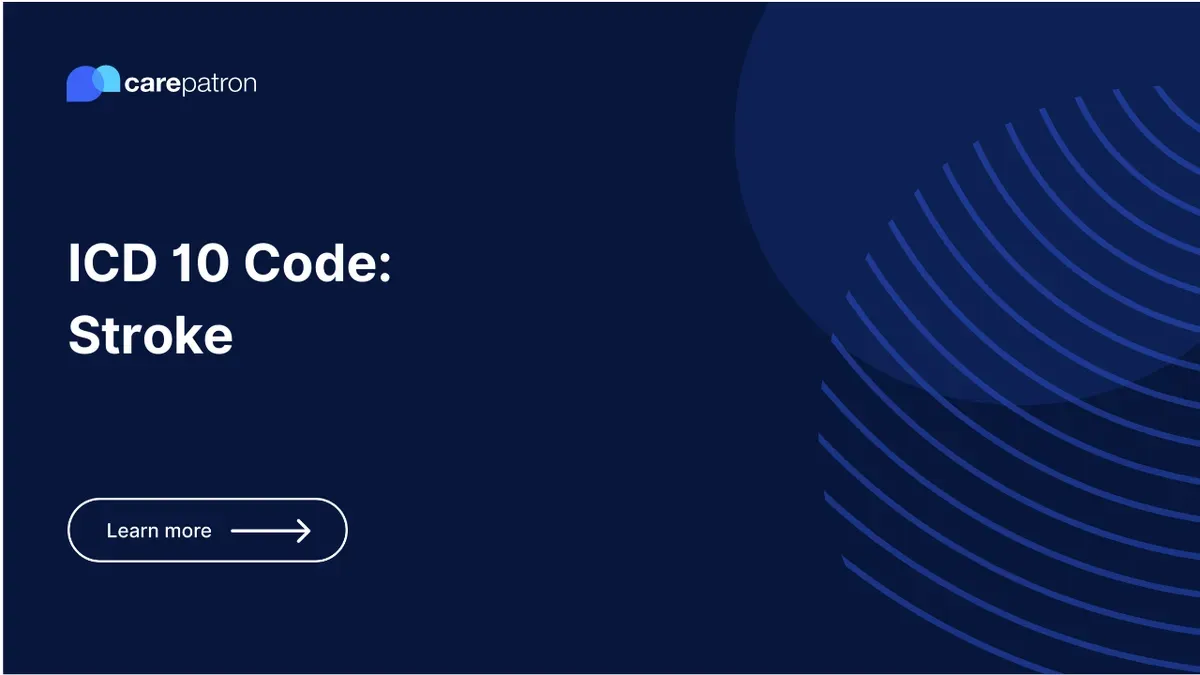
Stroke ICD-10-CM Codes | 2023
Discover commonly used ICD-10 codes for stroke diagnosis, understanding stroke types and their impacts on patient health and treatment with Carepatron.
Use Code
Commonly asked questions
Stroke ICD codes are used when a patient has been diagnosed with a stroke or has a history of stroke. They help document specific types of stroke, associated conditions, and residual effects, if any.
Yes. Stroke diagnosis codes are billable and can be used in medical billing.
Common treatments for stroke can include medication like thrombolytics, surgical procedures, rehabilitation therapy, lifestyle changes, and management of underlying conditions like hypertension.
EHR and practice management software
Get started for free
*No credit card required
Free
$0/usd
Unlimited clients
Telehealth
1GB of storage
Client portal text
Automated billing and online payments
